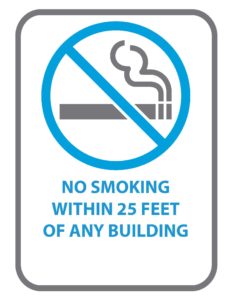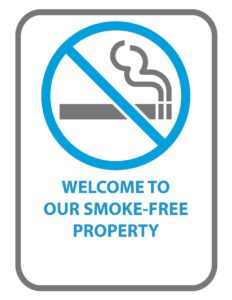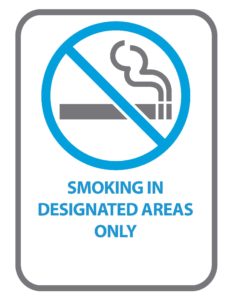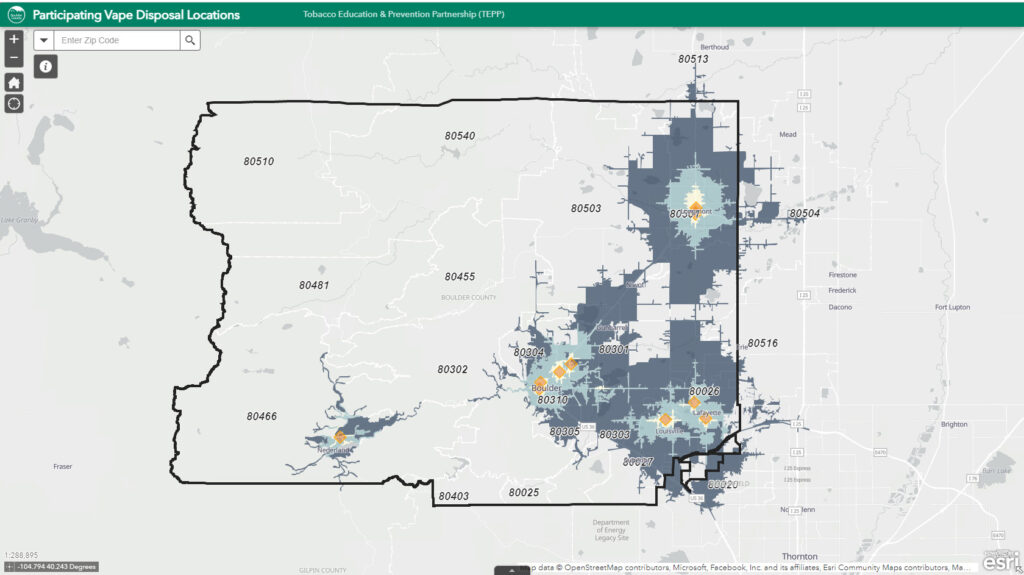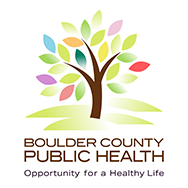Secondhand Smoke
Secondhand smoke is a combination of the smoke emitted from the burning end of a cigarette, pipe, vaping device, or cigar, and the smoke exhaled from the lungs of smokers. This mixture contains more than 7,000 chemicals, many of which are toxic and dozens of which are known to cause cancer. There is no safe level of exposure to secondhand smoke, even small amounts may have major implications on health and safety.
Report A Complaint Or Concern About Secondhand Smoke
Health Impacts
According to the US Surgeon General, secondhand smoke causes nearly 50,000 adult deaths in the United States every year. Even in small amounts, secondhand smoke can trigger an asthma attack, a heart attack, or even a stroke. In addition, secondhand smoke has been classified by the U.S. Environmental Protection Agency (EPA) as a known cause of lung cancer in humans (Group A carcinogen). It is estimated that over 7,000 lung cancer deaths have occurred in adult nonsmokers in the United States as a result of secondhand exposure.
Secondhand smoke poses a serious health risk to children. Health effects seen in children exposed to this type of smoke include increased risk of lower respiratory tract infections (such as bronchitis and pneumonia), increased risk of ear infections, increased severity, and frequency of asthma attacks, decreased lung function, and an increased risk of Sudden Infant Death Syndrome (SIDS).
Secondhand smoke can impact your pets – exposure to this type of smoke can cause cancer, respiratory diseases, skin irritation, and ear, nose, and throat conditions.
The Colorado Clean Indoor Air Act
The Colorado Clean Indoor Air Act (CCIAA) has been updated to protect most indoor places from secondhand smoke and aerosol. Nearly all indoor public places are smoke and vape-free, including restaurants, bars, libraries, all hotel/motel units, theaters, common areas in multi-unit dwellings, and many other places. A building’s main entryway must also be smoke and vape-free and smoking or vaping should not take place within 25 feet of that entryway (unless otherwise stated by local code).
Local Regulations
Boulder County municipalities may have adopted stricter regulations regarding smoking and vaping, so be sure to check your local code. Property owners and managers are also allowed to implement stricter codes under the Colorado Clean Indoor Air Act, so check your workplace and organizational rules, too.
Exemptions
Individual units within multiunit housing, private homes, cigar bars, tobacco and vape retailers, limos under private hire, and marijuana tasting rooms are among the few exceptions to the law. In many cases, the Tobacco Education and Prevention (TEPP) Partnership can provide more information, community or provider education, and signage resources. Interested parties may contact TEPP with requests.
Tips to Meet Clean Indoor Air Requirements
Whether you are a business owner or a Boulder County resident, here are a few tips to make sure that the requirements of the Colorado Clean Indoor Air Act are being met in the spaces you live, work, and play:
- Learn more about the Colorado Clean Indoor Air Act expansion and recent updates.
- Do not allow smoking or vaping within 25 feet of the main entryway of your home or business.
- Post no-smoking and no-vaping signs at all building or facility entrances.
- In order to reduce secondhand smoke drift, try to avoid smoking or vaping near entryways, operable windows, or in outdoor areas where the public gather.
- If possible, place ashtrays and other cigarette disposal containers at least 25 feet away from building entrances to reinforce minimum distance requirements.
- Download our free sign template, smokefree factsheet, or request additional free resources from the Tobacco Education & Prevention Partnership.
Learn More
Report A Complaint Or Concern About Secondhand Smoke



